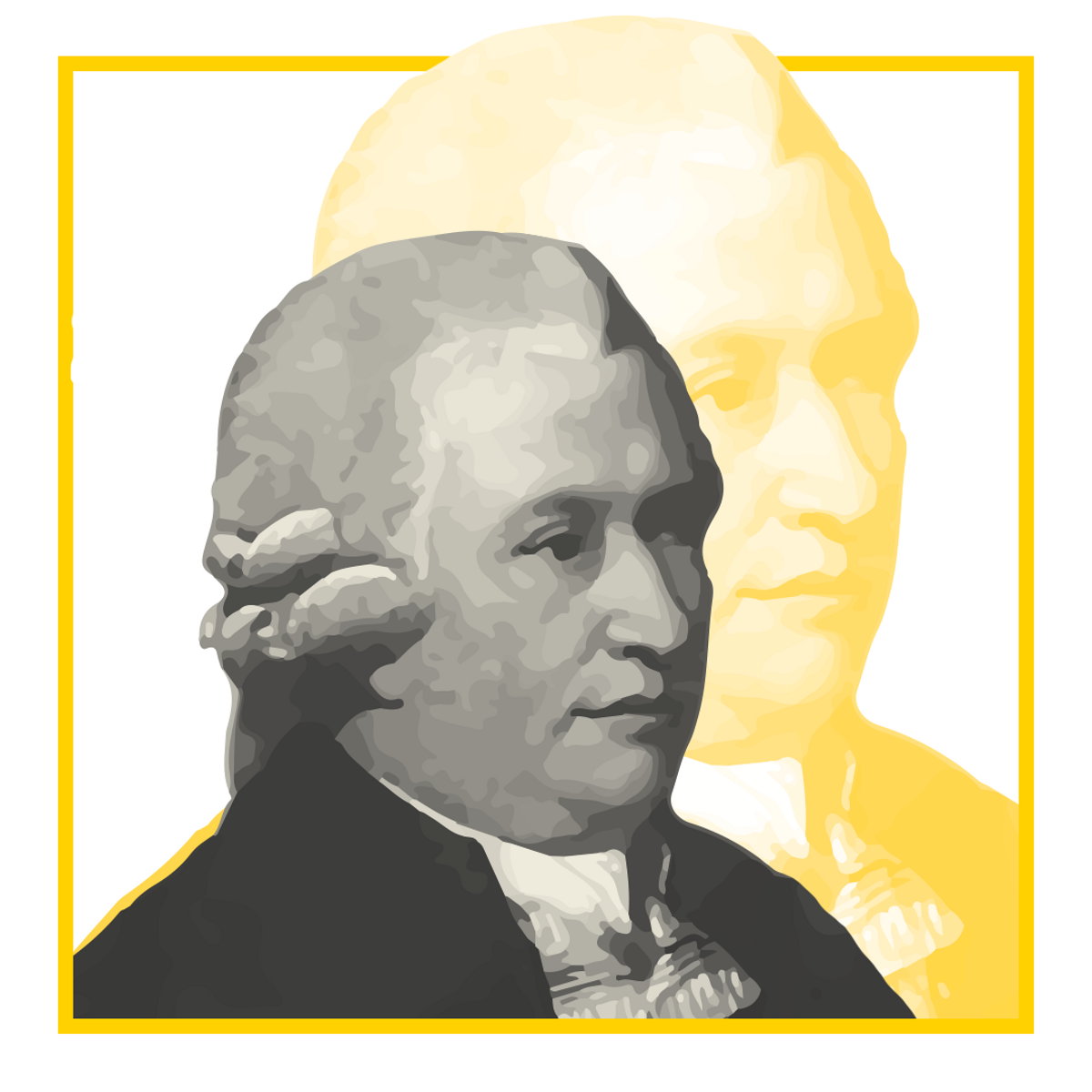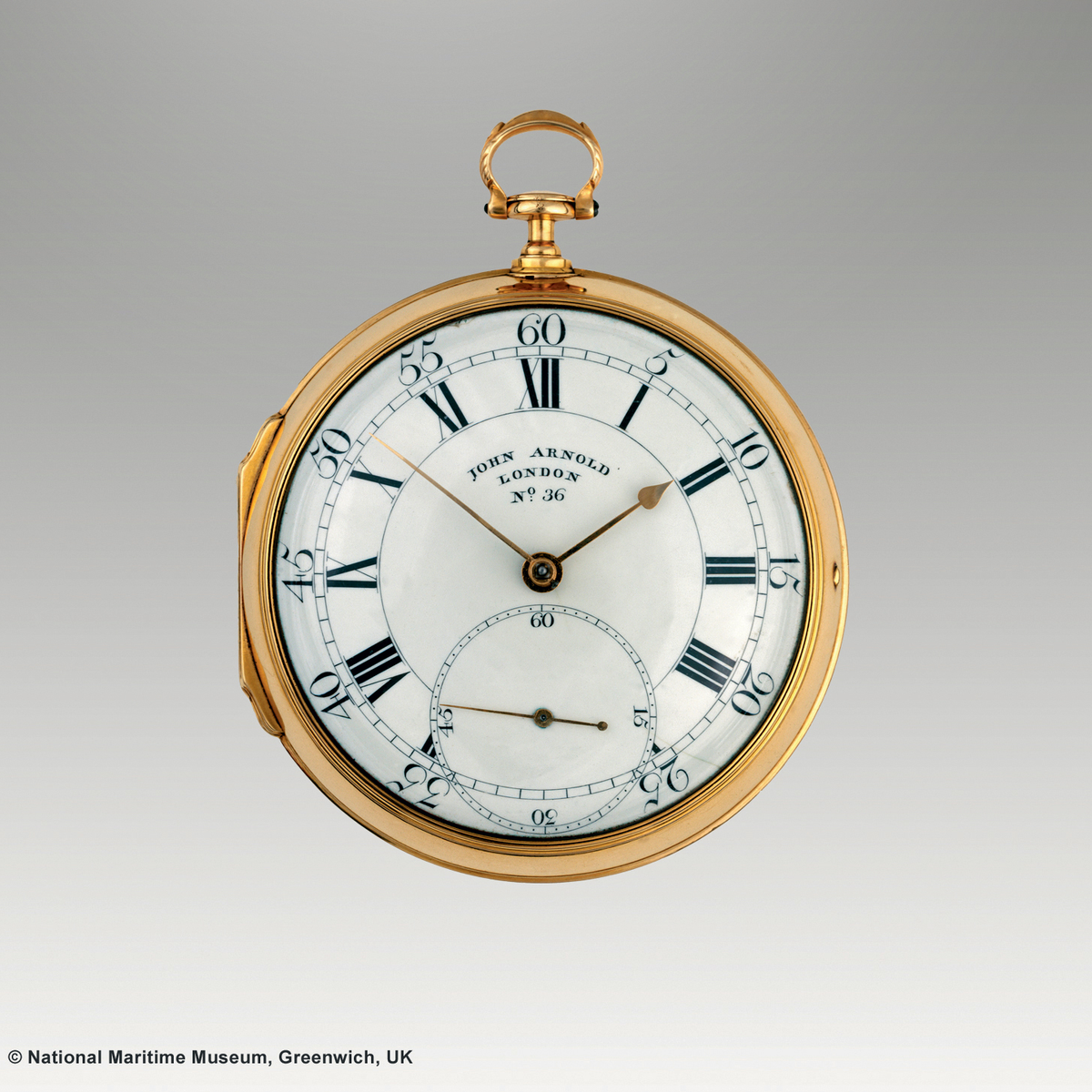The son of a watchmaker, born in Bodmin in 1736, John Arnold was destined to follow in his father’s footsteps and was indeed apprenticed to him, until a family dispute caused him to leave his Cornish home for the continent. His wanderings took him first to the Netherlands then Germany. He struggled to make a living, occasionally working as a gunsmith when his watchmaking skills failed to find him employment. Disheartened, he returned to England and set himself up in London, where his talent began to shine. A half-quarter repeater set in a ring, which he presented to George III in 1764, cemented his reputation and earned him the favours of the court, as well as an ever-expanding clientele. He surpassed this four years later with a gold and enamel pair-cased watch whose numerous refinements included a minute repeater and centre seconds. Succinctly named N° 1, it too was presented to the king. In 1770 he entered into contact with the Board of Longitude and submitted his first marine chronometer to the Royal Observatory in Greenwich.
The race was on to devise and build a reliable and accurate marine chronometer, and John Arnold was not to be left out. Some of the chronometers which he presented to the Board of Longitude in the 1770s would accompany James Cook on his Pacific voyages. Arnold’s skill was recognised by his peers, but this was clearly not enough. His next goal was to produce chronometer mechanisms that would be small enough to fit inside a pocket watch and no less precise. He did so with encouraging results, thanks to his invention of a bimetallic temperature-compensated balance, which he patented in 1775. He also invented a terminal curve for the balance spring and a detent escapement. Advancements such as these further improved the precision of Arnold’s chronometers. His N° 36 successfully completed thirteen months of trials at the Greenwich Royal Observatory. Much of Arnold’s work was aimed at simplifying mechanisms although this also made them easier to copy, prompting him to file a number of patents.
In the early 1790s, John Arnold became acquainted with Abraham-Louis Breguet. The two men became firm friends, each apprenticing his son with the other. On John Arnold’s death in 1799, Breguet honoured him by incorporating his latest invention, the very first tourbillon, into one of Arnold’s early pocket chronometers.
1764
John Arnold was granted permission to present King George III with a ring set with a half-quarter repeater watch, fitted with a cylinder escapement.
1770
First marine chronometers intended for sea trials and presentation to the Board of Longitude of a chronometer that could be made for just 60 guineas.
1772
Invented a pivoted detent escapement.
1772-1775
Captain James Cook took Arnold’s marine chronometer N° 3 on his second Pacific voyage. It was looked after by two astronomers, appointed by the Board of Longitude.
1773
John Arnold built his first pocket chronometer, N° 8.
1775
Awarded patents for a bimetallic temperature-compensated balance and for a helical balance spring with terminal curves.
1779
Pocket chronometer N° 36 successfully completed trials at the Royal Observatory in Greenwich.
1796
John Arnold retired and handed over his business to his son, John Roger Arnold (1769-1843).

